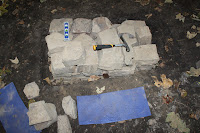More and more we are being asked the following questions:
- Why take children outdoors to learn?
- What are the benefits to the school?
John Muir Awards (Discovery, Explorer, Conserver).
The John Muir Award is an environmental award scheme focused on wild places. It encourages awareness and responsibility for the natural environment, in a spirit of fun, adventure and exploration.
John Muir Award video (Part 1)
http://www.youtube.com/watch?v=roe9ufSBubw&feature=share&list=PLA3CD73F6865C6122
As a member of the John Muir Trust we work towards the vision that "Wild land is protected and enhanced throughout the UK and wild places are valued by all sectors of society", through educational programmes with children, families, schools and organisations to meet the criteria of the John Muir award.
We develop bespoke programmes to meet the needs of our clients to promote personal development, a fun and adventurous spirit, explore values and encourage personal responsibility for wild places.
Our programmes can be tailored to include orienteering, geo-caching, mountain biking, hill walking, and water sports for more adventurous groups. This programme can also be delivered as part of a residential/camp experience.
John Muir Award Video (Part 3)
The Cyfleon approach
At Cyfleon we use highly skilled practitioners trained in proven pedagogical approaches to improve learning and personal effectiveness. We draw upon global best practice in learning outside of the classroom, particularly Scandinavian approaches enabling us to provide young people and families with holistic learning experiences to develop the 'whole child'.
We ensure there is an appropriate level of ‘scaffolding’ to ensure children & young people of all capabilities receive the right level of challenge to achieve.
We ensure there is an appropriate level of ‘scaffolding’ to ensure children & young people of all capabilities receive the right level of challenge to achieve.
Discovering wild places
Pictures: Summit of The Blorenge, a Site of Special Scientific Interest (SSSI).
Exploring the wilderness
Pictures: Finding edible plants and surveying the Flora & Fauna of the area.
Conservation
Picture: Supporting the Local Biodiversity Action Plan at a Local Nature Reserve (LNR)
Picture: using tools and following designs to make bird boxes
Remember our two questions from the beginning?
The John Muir Award(s) are a great vehicle for
providing the opportunity for children & families to learn about the
natural environment, how to handle risks and most importantly to use their own
initiative to solve problems and develop their independence.
Without stating the obvious benefits to the school with regards to happier, healthier and more conscientious learners (this will be covered in greater detail within later bloggs), the John Muir Awards are recognised by the Iinspectorate for Wales (Estyn) as best practice for schools to undertake.
For more information on the curriculum links please see the PDF attached on Curriculum for Excellence : http://www.jmt.org/assets/john%20muir%20award/downloads/jmt_cfe_final-1.pdf
To date we have been privaliged to deliver John Muir Award programmes with:
- SEN Schools (Tertiary 14-19)
- Primary Schools (year 5 &6).
- Gypsy traveller project
- School transition projects (year 6 & 7).
- Residential (Primary)
- Families
- NEETs (14-19 learning pathway).
For more information on how we can support your child, family, school or organisation with developing outdoor learning opportunities (with accredited outcomes) please contact us:
Mob: 07903249789 or Email info@cyfleon.co.uk
For more information on the John Muir Award please go to http://www.jmt.org/jmaward-home.asp





















